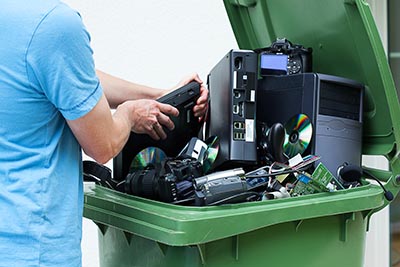
It is an undeniable fact that electronic appliances and devices have become an integral part of modern life. Computers specifically have become indispensable tools for conducting business worldwide, and the near-complete ubiquity of smartphones has drastically altered the way in which we communicate with one another on a day-to-day basis. According to a well-known global network of professional firms that provides advisory services in logistics, transportation, and supply chain management, as of the present day, there are more than two billion computers in the world, including servers, desktops, and laptops. Meanwhile, the statistics regarding smartphones are even more stunning. By the estimates of one often-cited website, there are more than 6.5 billion smartphone users currently active on the planet, which translates into 83.72% of the global population.
Although this data carries with it countless implications across many industries and fields of study, one of the least talked-about and potentially most damaging effects of this incredible and relatively recent prevalence of consumer electronics is that of waste disposal. Put simply, because of the raw numbers involved, millions of computers and smartphones (as well as other, slightly less common electronic appliances and devices, such as printers, DVD players, and televisions) become obsolete every single day when they are replaced by businesses, individuals, and the like. But what happens to these devices at the end of their useful lives? Do they just get sent to the local landfill (often illegally) with all the other ordinary garbage? And if not, where does this special kind of trash go and how is it dealt with? By means of answering these and other related questions, Computer Recycling of Union, NJ (a HIPAA-compliant electronics recycling company that specializes in such matters), presents the following handy guide to the process for properly disposing of electronic waste, otherwise known as e-waste.
E-waste is a special type of garbage
To begin with, it’s important to understand that e-waste isn’t the same as ordinary trash. Whereas items such as broken furniture and non-recyclable containers can be placed in landfills without too much danger, and yard waste and foodstuffs can be composted at municipal heaps, this is not the case with e-waste. Because all electronic appliances and devices contain components made of rare and toxic minerals, they cannot simply be disposed of in the same manner as most other types of garbage. Indeed, because the erosion of these components poses a significant public health risk, nearly every state in the country has passed laws mandating rules governing the disposal of e-waste. Companies that recycle e-waste, such as Computer Recycling, are required to be properly licensed, and to have certain specialized equipment. They are also subject to inspection by the Environmental Protection Agency (EPA) and other relevant government agencies on the state level.
Collection and transportation
Most e-waste collection begins with the efforts of individuals or families, who, after an electronic appliance or device is replaced or determined to be no longer useful, drop these items off at local waste transfer stations, taking great care to sort them into the correct receptacles. From there, waste technicians deliver them to a licensed e-waste recycling facility. Sometimes, companies or organizations hold events encouraging members of the community to donate their old electronics for proper disposal, after which all e-waste collected is dropped off to a facility. Select companies, of which Computer Recycling is one, also offer convenient pick-up services, especially where bulk shipments of e-waste are concerned.
Destruction of personal information
Once electronic appliances and devices have arrived at a licensed processing facility, they are thoroughly checked by technicians for any personal information left on them by their former owners. This can take many forms, including banking information, medical information, or any information that could be used by scammers for credit or identity theft. If any such information is found, it is immediately destroyed using cutting-edge, hacker-proof technology. This is accomplished through a US Department of Defense (DOD) standard wipe or physical destruction of the drive.
Recycling of other materials
Finally, the other constituent parts of each item of e-waste are separated, disassembled, categorized, and prepared for more traditional methods of disposal. Some of the parts, like the glass from monitors, are recycled in a manner similar to that of empty bottles, while others, such as non-dangerous metals, are melted and refined to improve their quality before re-use. In the end, after being subject to a proper and responsible recycling process, every aspect of e-waste is almost totally repurposed in one way or another, leaving only a tiny amount of waste left over, if any at all.
Computer Recycling of Union, NJ is one of the nation’s premier electronics recycling companies. They are one of only a few companies that can legally collect, disassemble, and safely recycle electronics and electronic components. Some of the services that Computer Recycling offers includes laptop recycling, TV recycling, data destruction (through either a US Department of Defense standard wipe or shredding of all hard drives/memory storage devices), and electronics collection through various methods. More information about the company can be found here.










